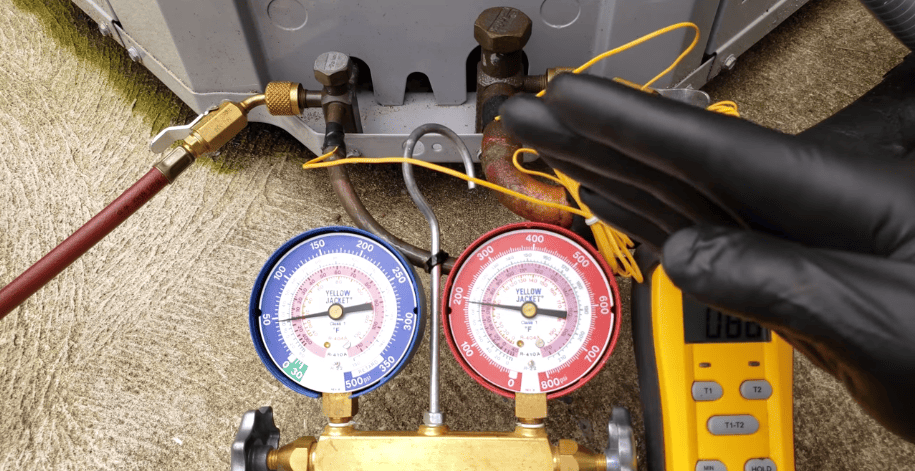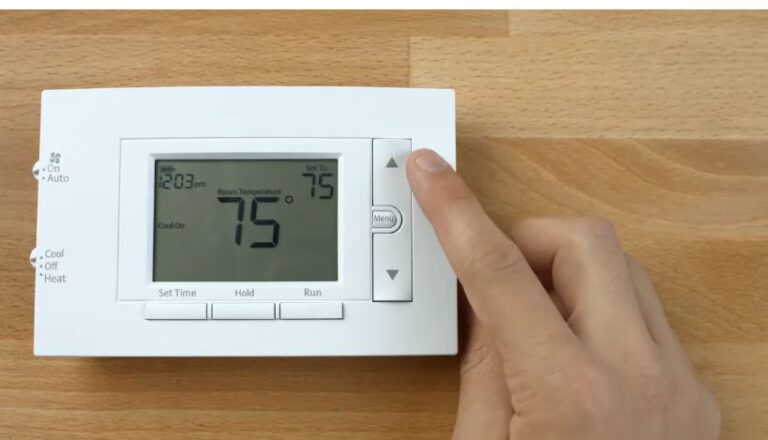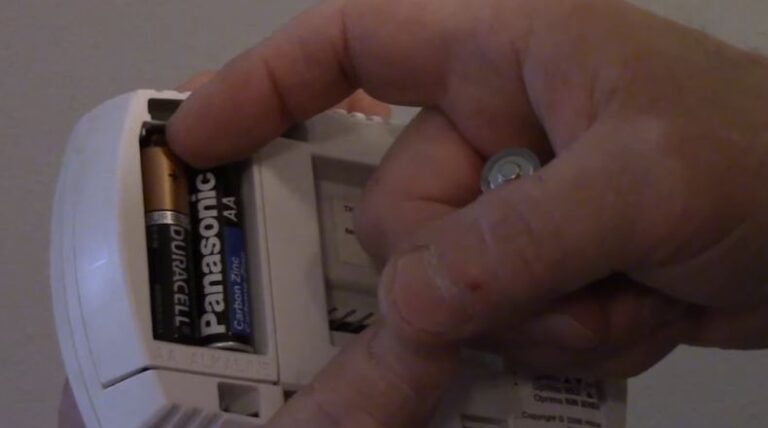AC High Pressure Line Hot Or Cold? [Here is the Fix]
When your AC is not cooling the way you want it to cool and you start troubleshooting different problems, you may end up discovering new things that you actually never knew about.
And when you start taking temperatures on both pressure sides of your ac , you may also get different readings and that is normal. But the question is, should the AC high pressure line be hot or cold?
An AC high pressure line under normal working conditions should be hot, that’s how an air conditioner is designed to work for it to cool. However, when your AC high pressure line is cold, that could be a sign of different issues with your air conditioning unit.

In general the normal operating temperature for the high side on an R22 system should be between 100 F to 120 F (200 to 250 PSI) and the low pressure side should be between 2 F to 7F( 25-30 PSI). That’s when it’s Assumed you have normal superheat and normal subcooling
Below is table 1 showing what temperature and pressure you should expect at both the high side and the low side of the AC.
Normal Temperature & Pressure At High/ Low Pressure Line
| HIGH PRESSURE LINE | HIGH PRESSURE LINE | LOW PRESSURE LINE | LOW PRESSURE LINE | |
| Type of system | Temp (F) | Pressure (psi) | Temp (F) | Pressure (psi) |
| R-22 | 100-120 | 200-250 | 2-7 | 25-30 |
| R-410a | 100-120 | 290-316 | 2-7 | 50-57 |
| R-407c | 100-120 | 222-280 | 2-7 | 20-24 |
| R-134a | 100-120 | 124-160 | 2-7 | 7-10 |
| R_404a | 100-120 | 236-300 | 2-7 | 35-40 |
Before we look at different problems that can cause AC high lines to be cold, let’s first look at how an air conditioner works.
Read also: Low Suction Pressure High Head Pressure
How does an air conditioner work?
In brief, air conditioners have 3 main parts that work together hand in hand to bring about cooling. These are the evaporator, the compressor and the condenser.
The compressor compresses the gaseous refrigerant that comes from the evaporator coil. Compressors easily compress gas but not liquid and they produce a lot of heat.
The compressed gaseous refrigerant then exits the compressor to enter the high side and into the condenser coil where most of the heat is disposed of.
Not all the heat is ejected in the condenser coil, the refrigerant becomes warm from hot and goes to the TXV valve.
The TXV valve is like a sprayer ( It regulates the amount of refrigerant that goes into the evaporator) that sprays the drops of the refrigerant in the evaporator coils which eventually evaporates and continues its way to the compressor system.
5 Reasons why AC High pressure line is cold
| Possible causes | Main fixes |
| Low superheat | Troubleshoot and fix low superheat |
| Failed thermal bulb | Replace thermal bulb |
| Stuck open TXV | Replace TXV valve |
| Problems with the compressor | Replace compressor |
1. Excess refrigerant to the evaporator coil
When there is excess refrigerant to the coil, this is known as low superheat and can be caused by different issues that include an overcharged ac system, a defective thermostat expansion valve or one that is stuck in the open position.
To find out whether there is excess supply of the refrigerant to the evaporator coil, you need to check superheat and here is how to do it.
Step 1:Take a thermostat designed to take pipe temperature
Step 2. Take the pressure reading at the suction line
Step 3. Convert the pressure reading taken to temperature using the pressure temperature chart.
Step 4 Get the difference of the two values
If the difference is 10 F then superheat if normal. On most system 10F is the normal superheat when measured at the evaporator coil and 20°F to 25°F near the compressor
Otherwise if the difference between the two measured temperature values is more than 10 then there is high superheat in your system.
2. Defective or stuck TXV
Another reason why the ac high pressure line is cold is that there is too much liquid refrigerant coming to the compressor.
And because the compressor is designed to compress air only, it won’t compress the liquid and hence there will be no heat produced.
More reason for liquid refrigerant coming to the compressor is that there is a malfunctioning TXV or one that is stuck in the open position and allowing excess refrigerant to go to the evaporator and eventually to the compressor..
3. Defective compressor
The last thing you want to hear is that your compressor is defective.
That simply because this is the most expensive part of your air conditioning system and if damaged, could justify the replacement of the whole system.
A defective compressor or whose components are defective will need to be replaced.
As mentioned earlier, a compressor’s primary task is to compress the gaseous refrigerant and convert the kinetic energy to heat energy.
That simply means that when the high pressure line is cold, it’s probably because compression wasn’t properly done and a possible reason for that is, a compressor is bad
4. Failed thermal Sensor Bulb
The sensing bulb’s main task is to control the opening and the closing of the thermostatic expansion valve by sensing the temperature of the refrigerant at the evaporator coil exit.
When the sensing bulb is malfunctioning and is sensing the wrong temperature, it can cause the refrigerant to continuously flow to the evaporator without being regulated.
Final Thought
Now that you have learnt that it’s normal for an AC high pressure to get hot, we hope that you have freed up your mind from worrying about having a tech to come and do the job for you.
The problem is when your AC high pressure line is cold.
That can mean serious problems with your AC and where possible when you notice the ac line getting cold, you should turn off your ac immediately to avoid causing damage to the other ACs components.
![How To Install A Thermostat Without C Wire [Full Guide]](https://thermostating.com/wp-content/uploads/2023/06/thermostat-installation-768x360.jpg)
![Ecobee Says No Equipment Running But Fan is On [Solved]](https://thermostating.com/wp-content/uploads/2023/01/ecobee-thermostat-1-jpg.webp)
![What is Nest Compressor Lockout? [An Energy Conserving feature]](https://thermostating.com/wp-content/uploads/2023/01/heat-pump-blance-on-nest-jpg.webp)
![Aprilaire Thermostat Says Off [Super Easy Fix]](https://thermostating.com/wp-content/uploads/2023/03/aprilaire-thermostat-768x426.webp)

